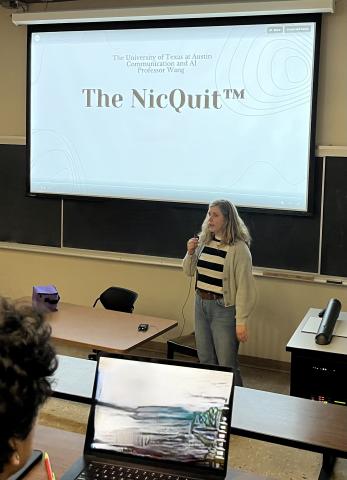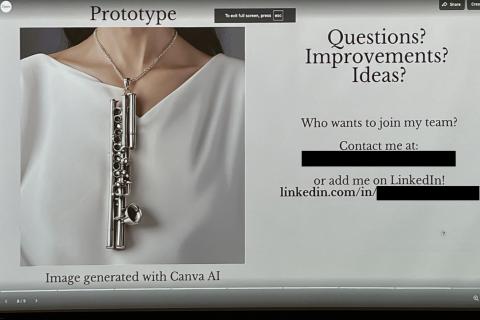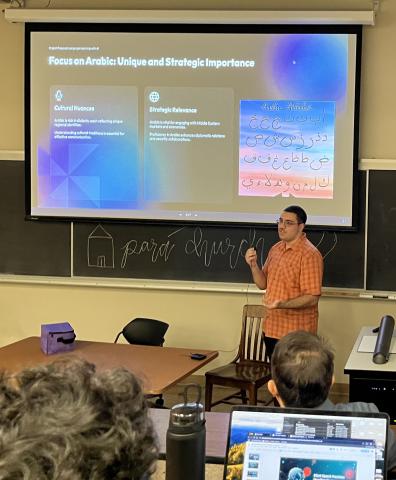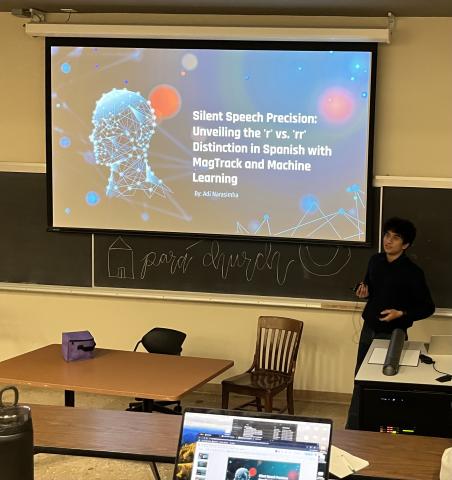AI Across Moody
Jun Wang's
Communication and AI
(UGS 303)
I use AI in my research in developing assistive speech technologies (e.g., silent speech interface, speech brain-computer interface), as AI may be the only solution.

Getting Started with AI in Your Course

Why use AI in this course?
In Communication and AI, two-thirds or more of the learning is about AI and its application in communication (speech recognition, language understanding, generative AI) and assistive technologies as well. Students (Moody or other non-engineering students) learn more details on AI even use AI in computer programming so that they can collaborate with AI engineers on innovative solutions for communication in the future. They also learn how to use AI as a tool in their work or study.
What was your AI policy in your syllabus?
"This course allows and encourage students to use AI in projects, assignments (but not for exams). However, they need to be done separately, not as a group. Students can work with AI, but do not get any help from another person including classmates. Please give credit to the AI tools that have been used and briefly describe how they were used in the submission of the assignment."
What are some instructional design considerations?
One student asked: "How do we know which AI tools are better?" Dr. Wang responded that there is no universal standard, the right tool depends on your problem/data. This exchange reflects the ambiguous, but supportive nature of helping students navigate the decision-making process. Students were encouraged to experiment with ideas. Their academic risk was assessed as a function of growth instead of trying to achieve one 'right' answer to address complex work as emerging professionals and build critical problem-solving skills.
Ethical and Practical AI Skills

How were students supported to use AI in ethical and practical ways?
We discuss potential ethical issues or questions as AI has been advancing so rapidly. Students use AI in the way instructed in the course and the projects are designed such that students have to follow the instructions, otherwise the AI won’t generate the expected results. Students considered how AI can solve problems and highlighted their critical and creative collaboration with AI tools to improve results.
What workplace GenAI skills do students learn in this course?
Students learn how to use AI to develop novel applications and to assist with their other work (e.g., processing text and visual design). Students learn how AI works, how to devise a novel application, and teamwork using AI a co-collaborator. For example, one student proposed to use AI as part of a solution for cessation of nicotine, creatively named "NicQuit." By combining current solutions with a novel component of AI monitoring biometric information.
Assessment of Projects and Instructional Design Considerations

How were the AI learning projects assessed?
To assess critical and creative thinking related to AI, students presented proposals for an AI model to solve a problem or improve an existing solution. Assessment was based on the novelty of proposed solutions, the level of analysis of the problem and possibilities, and clarity of communication. Dr. Wang explained the basic aspects of a proposal and the students followed different paths to accomplish the task.
In this project-based learning approach with sustained student inquiry to address challenges in their field of study, student choice and voice were clear in the array of topics. The names of the proposed AI tools were appropriate, but creatively conceived: “Crib Match” for an apartment locator assistant and “NicQuit” for a smoking cessation idea.
All students articulated the context of the issue, exploring capabilities of AI tools for the intended purpose, discussed a plan to address the issue with the help of AI, and cited specific AI tools under consideration. Some students indicated their motivation to solve the problem to make a compelling audience connection. Based on their research, students were able to answer audience questions related to their proposed AI collaboration.
You have to train AI to think about AI to create the AI.
Student Research Mentoring and AI Applications

As a result of taking this course, one of the students in the class pursued a real-world research project with Dr. Wang. Fascinated by Dr. Wang’s silent speech interface project—an AI-driven system that synthesizes speech from tongue motion in real-time—he was particularly interested in its clinical applications for patients who lose their ability to speak after larynx removal but retain tongue movement, allowing them to produce silent speech.
When Dr. Wang announced that the course project would involve writing a proposal for a novel AI application, the student began considering how he could contribute to the silent speech interface project. During office hours, he discussed his thoughts and the feasibility of his involvement with Dr. Wang. In response, Dr. Wang suggested he tackle a less technically complex but still novel AI problem: isolated sound classification for another language. While this problem has been addressed in English, it remains largely unexplored in other languages, such as Spanish—one of the most widely spoken languages in the U.S. and globally.
Dr. Wang noted that the student's project was novel and could be a great fit for undergraduate research showcases. Excited by this opportunity, the student started implementing a machine learning algorithm to contribute to this research and submitted his poster to the Technology & Science Undergraduate Research Forum by College of Natural Sciences.
I'm lucky to have taken this course.

